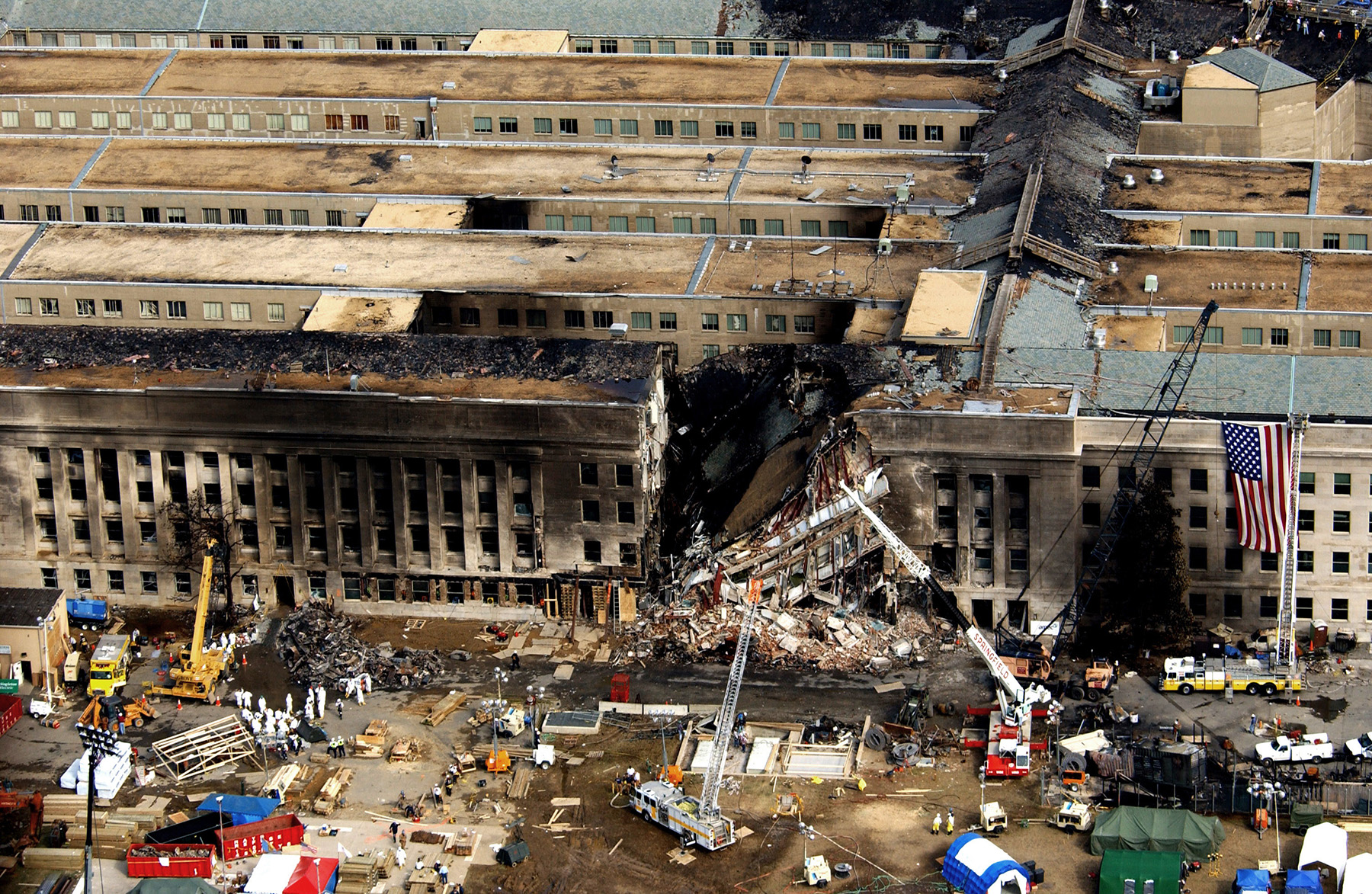
By Laurie A. Shuster
On the day that terrorists attacked the World Trade Center and the Pentagon, ASCE and its Structural Engineering Institute established a group of volunteers, known as the building performance study, or BPS, team, to examine the damage to the Pentagon and make recommendations for the future. Team members were experts in structural engineering, structural fire, and forensic engineering, led by Paul F. Mlakar, Ph.D., P.E., F.SEI, Dist.M.ASCE. In January 2003 ASCE and SEI published their conclusions in The Pentagon Building Performance Report. What follows are excerpts from that report’s Executive Summary and Findings sections:
The BPS team’s analysis of the Pentagon and the damage resulting from the attack was conducted between September 2001 and April 2002. The members of the BPS team inspected the site as soon as was possible without interfering with the rescue and recovery operations. They reviewed the original plans, the renovation plans (a nonstructural renovation had been one-fifth completed on the day of the attacks), and available information on the material properties of the structure. They scrutinized aircraft data, eyewitness information, and fatality records; consulted with the urban search and rescue engineers, the chief renovation engineer, and the engineer in charge of the crash site reconstruction; and examined the quick, focused assessments of the disaster conducted by the United States Army Corps of Engineers and Pentagon Renovation Program Staff.
On the basis of this information the BPS team analyzed the essential aspects of the response of the structural system of the Pentagon to the crash. Impact analysis revealed that the spirally reinforced columns could withstand substantial dynamic lateral loads and deflections. Static analyses indicated that the floor system was capable of significant load redistribution without collapse when several adjacent supporting columns were removed or severely damaged by an extreme action. Thermal analyses showed that the ensuing fire could have sufficiently weakened some damaged frame members to result in collapse within 20 minutes of initiation.
The BPS team concluded that the impact of the aircraft destroyed or significantly impaired approximately 50 structural columns. However, only a relatively small segment of the affected structure collapsed, approximately 20 minutes after impact. The collapse, fatalities, and damage were mitigated by the Pentagon’s resilient structural system. Very few upgraded windows installed during the renovation broke during the impact and deflagration of aircraft fuel.
Through observations at the crash and approximate analysis, the team determined that the direct impact of the aircraft destroyed the load capacity of about 30 first-floor columns and significantly impaired that of about 20 others along a diagonal path that extended along a swath that was approximately 75 ft wide by 230 ft long through the first floor. This impact may also have destroyed the load capacity of about six second-floor columns adjacent to the exterior wall. While the impact scoured the cover of around 30 other columns, their spiral reinforcement conspicuously preserved some of their load capacity. The impact further destroyed the load capacity of the second-floor system adjoining the exterior wall.
The subsequent fire — fed by the aircraft fuel, the aircraft contents, and the building contents — caused damage throughout a very large area of the first story, a significant area of the second, a small part of the third, and only in the stairwells above. This fire caused serious spalling of the reinforced concrete frame only in a few small, isolated areas on the first and second stories. Subsequent petrographic examination showed more widespread heat damage to the concrete.
Despite the extensive column damage on the first floor, the collapse of the floors above was extremely limited. Frame and yield line analyses attribute this lifesaving response to the following factors:
- Redundant and alternative load paths of the beam and girder framing system.
- Short spans between columns.
- Substantial continuity of beam and girder bottom reinforcement through the supports.
- Design for 150 lb/sq ft warehouse live load in excess of service load.
- Significant residual load capacity of damaged spirally reinforced columns.
- Ability of the exterior walls to act as transfer girders.
An area covering approximately 50 ft by 60 ft of the upper floors above the point of impact did collapse approximately 20 minutes after the impact. Thermal analyses indicate that the deleterious effect of the fire on the structural frame, together with impact damage that removed protective materials and compromised strength initially, was the likely cause of the limited collapse in this region.
The BPS team recommended that those features of the Pentagon’s design that contributed to its resiliency in the crash — continuity, redundancy, and energy-absorbing capacity — be incorporated in the future into the design of buildings and other structures in which progressive collapse was a possibility.
Civil Engineering published two related features, one on the renovation of the Pentagon that began in the 1990s and one on the reconstruction of the damaged section and completion of the renovation. “The Pentagon Project,” by Lester M. Hunkele III, P.E., M.ASCE; Julian Sabbatini, P.E., M.ASCE, and Gary Helminski, was published in the June 2001 issue. “Rebuilding the Pentagon,” by Richard A. McSeveney, P.E., M.ASCE; Sean M. Buckley, P.G.; Betsy Strohecker, LEED AP BD+C; Ehab M. Hanna, M.ASCE; and David E. Husson, LEED AP, was published in the September 2011 issue.
Laurie A. Shuster is the editor in chief of Civil Engineering.
Read the next article in the collection: "The impact: A world changed."



